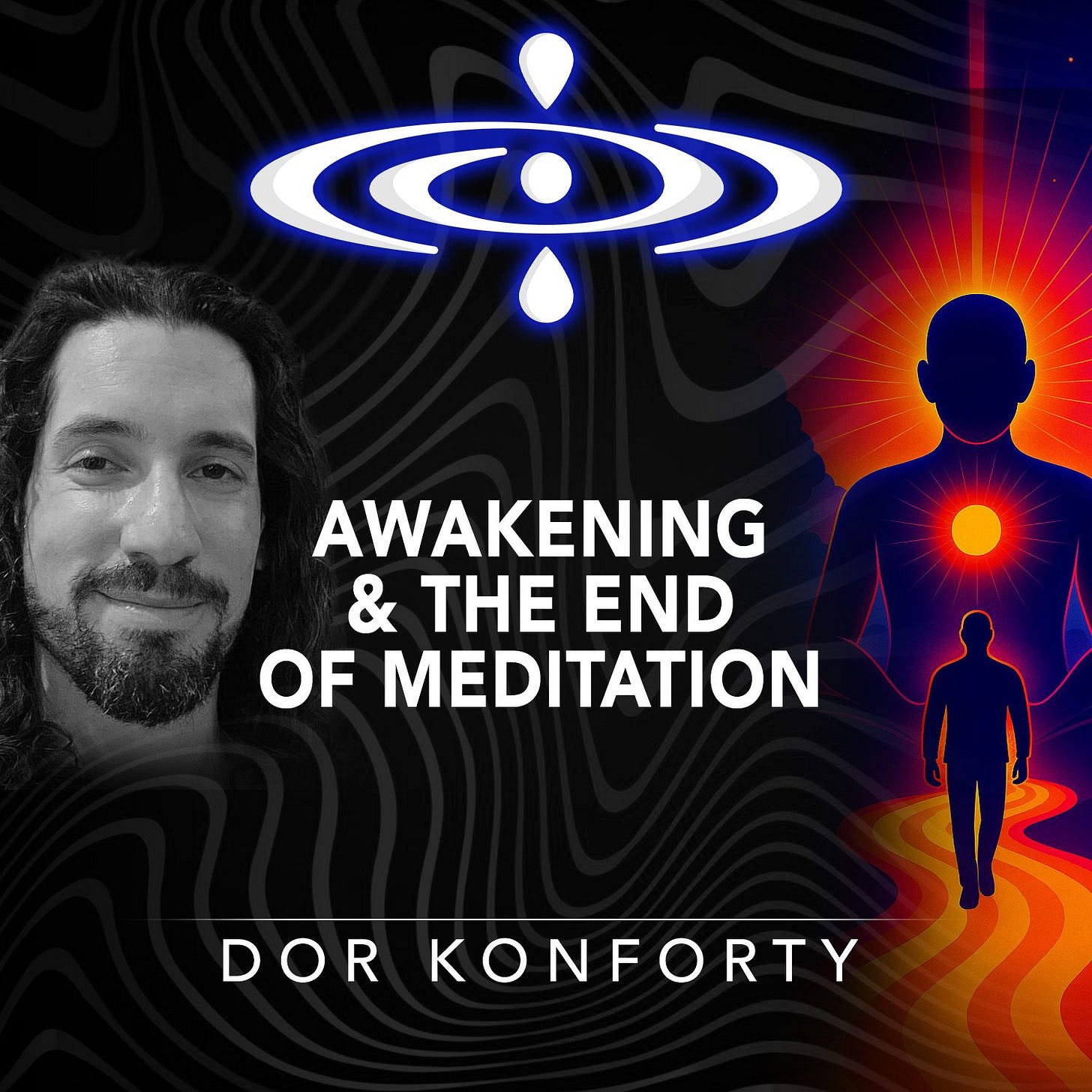🌀 The Future of Awakening & The End of Meditation
The pragmatic dharma lineage, integrating emptiness with fullness, investing in awakening technologies, making meditation unnecessary, aligning artificial intelligence with dharma, and more.
Daniel Ingram’s Mastering the Core Teachings of the Buddha was a portal into pragmatic dharma— a subculture of Modern Buddhism focused on stripping away dogma and revealing a systemic path towards awakening.
By the time I found Ingram’s book, I already had a committed meditation practice and a handful of mystical experiences that I was struggling to integrate into my life
His writing helped me make sense of the dark night territory I was navigating and introduced me to a wider ecosystem of teachers and texts that would guide my journey.
This included teachers like Shinzen Young and Michael Taft, and pragmatic dharma classics like Rob Burbea’s Seeing That Frees, Ken McLeod’s Wake Up to Your Life, and Culadasa’s The Mind Illuminated.
Eventually, I found myself doing a retreat with Dan Brown, a Harvard-trained psychologist and meditation teacher with over 40 years of training in Indo-Tibetan lineages.
In a bittersweet fashion, it turned out to be one of the final retreats Dan would teach before his passing. It was there that I met his student and successor, Dustin DiPerna, who has since become my primary meditation teacher.
At the same time as I was engaged with practice, I was listening to podcasts like Deconstructing Yourself and Guru Viking, both of which featured many of the leading voices in pragmatic dharma.
One episode that stood out featured Delson Armstrong, a meditation virtuoso who spent years training in the Himalayas and reminded me of a young Yogananda.
I was inspired by Delson’s story and his claims of being able to shut down his mind on demand.
I found myself reading Delson’s books and listening to his dharma talks, but something felt off.
Around that time, I encountered Charlie Awbery and Jared Jane’s “Sutra to Tantra” presentation on The Stoa. In it, they introduced a critical distinction between a Sutric view (one that emphasizes renunciation) and a Tantric view (one grounded in the affirmation of life).
It became clear that, despite how moved I was by Delson’s journey, his teachings came from a Sutric lens, making them less compatible with a householder such as myself.
I spent the next year engaging with Charlie and Jared’s community, Evolving Ground (eG), and reading David Chapman’s “Vividness,” a hyperlink e-book that explores Vajrayana Buddhism.
Through eG, I also connected with another pragmatic practitioner, Ari Nielsen, whose writings on meditation continue to blow my mind.
Over these years, I’ve been impacted by many teachers and practitioners, but I’ve found myself most at home with Dustin Diperna’s Rigdzin sangha.
It’s through Rigdzin that I met Dor Konforty — a neuroscientist, entrepreneur, and awakening teacher dedicated to distilling the first principles of the dharma and bringing them to every aspect of human life.
Dor spent most of his twenties conducting interdisciplinary brain research in academic settings, and his thirties as an entrepreneur and CEO in the decentralization space—applying his neuroscience background to envision more collaborative, non-zero-sum human networks.
In parallel, he has devoted thousands of hours to meditation practice, training closely with many of the same pragmatic dharma teachers that have impacted me, including Culadasa, Daniel Ingram, Delson Armstrong, and Dan Brown.
Dor is also the author of The Heart Illuminated, a spiritual successor to Culadasa’s classic The Mind Illuminated. His book builds on the pragmatic dharma lineage, laying out a clear and systemic path towards awakening.
I’ve found much overlap in our paths and a deep resonance with how Dor speaks about meditation and awakening, so it was only natural that I invited him onto my podcast.
Click the video below to listen to our conversation where we explore Dor’s book The Heart Illuminated, his experiences studying with pragmatic dharma teachers, integrating emptiness with fullness, investing in awakening technologies that aim to make meditation unnecessary, aligning artificial intelligence with dharma, and navigating the complexities and controversies that can arise in relationships with spiritual teachers.
Insightful takeaways 🤓✍️
A well-designed map of the contemplative path can dramatically accelerate awakening by reducing confusion and trial-and-error.
Integrating both mind and heart from the outset helps create a more balanced, emotionally intelligent form of practice.
Awakening isn’t just about subtracting identity—it’s also about building coherent, life-affirming ways of being in the world.
Emptiness practice helps unravel fixation and identity, but without integration into daily life, it can become sterile or escapist.
A dynamic practice includes waking up, growing up cleaning up, and showing up—each reinforcing the others in a generative spiral.
True freedom arises not just from detachment, but from being able to engage life fully without clinging or confusion.
In a dharma-aligned society, the need for formal meditation may diminish as contemplative values become embedded in culture and infrastructure.
Technological tools that mirror attention training or support ethical clarity could become vital components of spiritual development.
Different teachers serve different functions: mapping, transmission, psychological integration, or devotional depth.
It’s possible—and important—to learn deeply from someone without idolizing them or replicating their blind spots.
Spiritual maturity includes the ability to hold reverence and discernment at the same time.
The path includes learning how to stay in relationship with a teaching even when the teacher reveals their human flaws.
Dive Deeper 🤿
To never miss future episodes make sure to subscribe to the "Elevating Consciousness" podcast on Apple, Spotify, or on most other podcast apps, in which you can paste this RSS link.
You can also subscribe to the YouTube channel if you prefer to watch
Thanks for reading. If you enjoyed this read click the “subscribe now” button below to subscribe. If you're already a subscriber click the “share insighter” button to share with a friend or the “leave a comment” button to share some thoughts.




